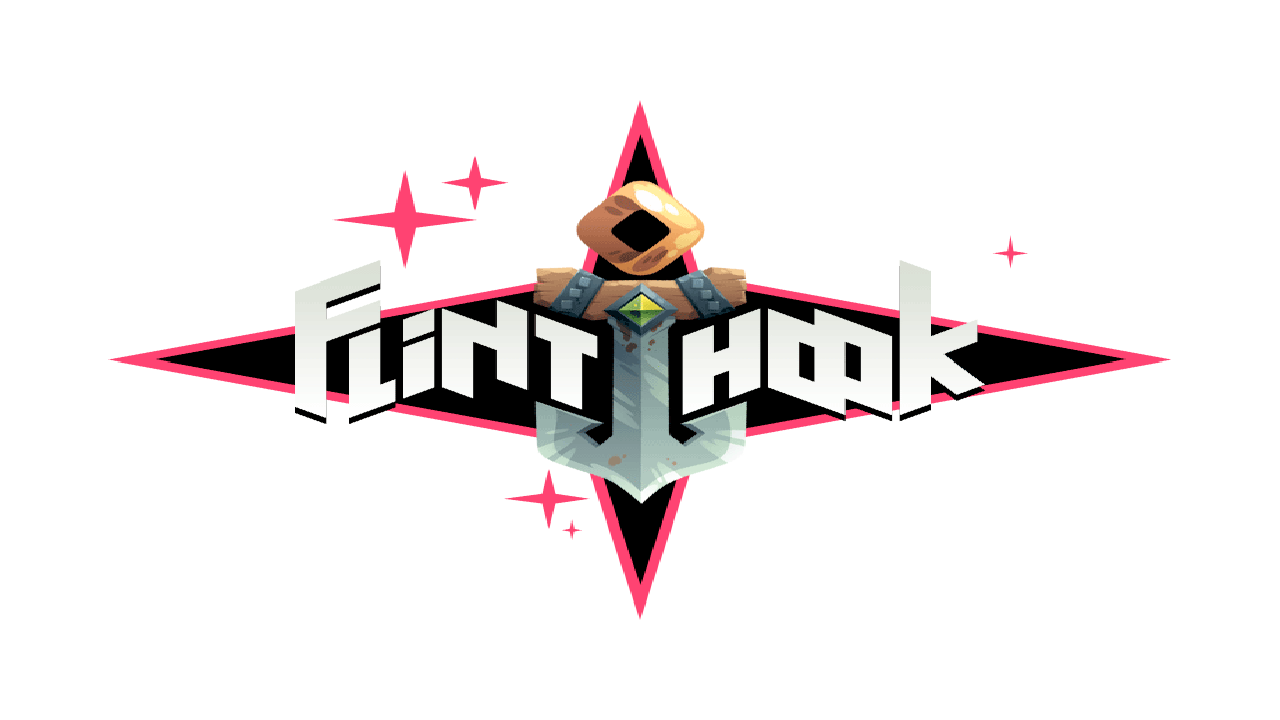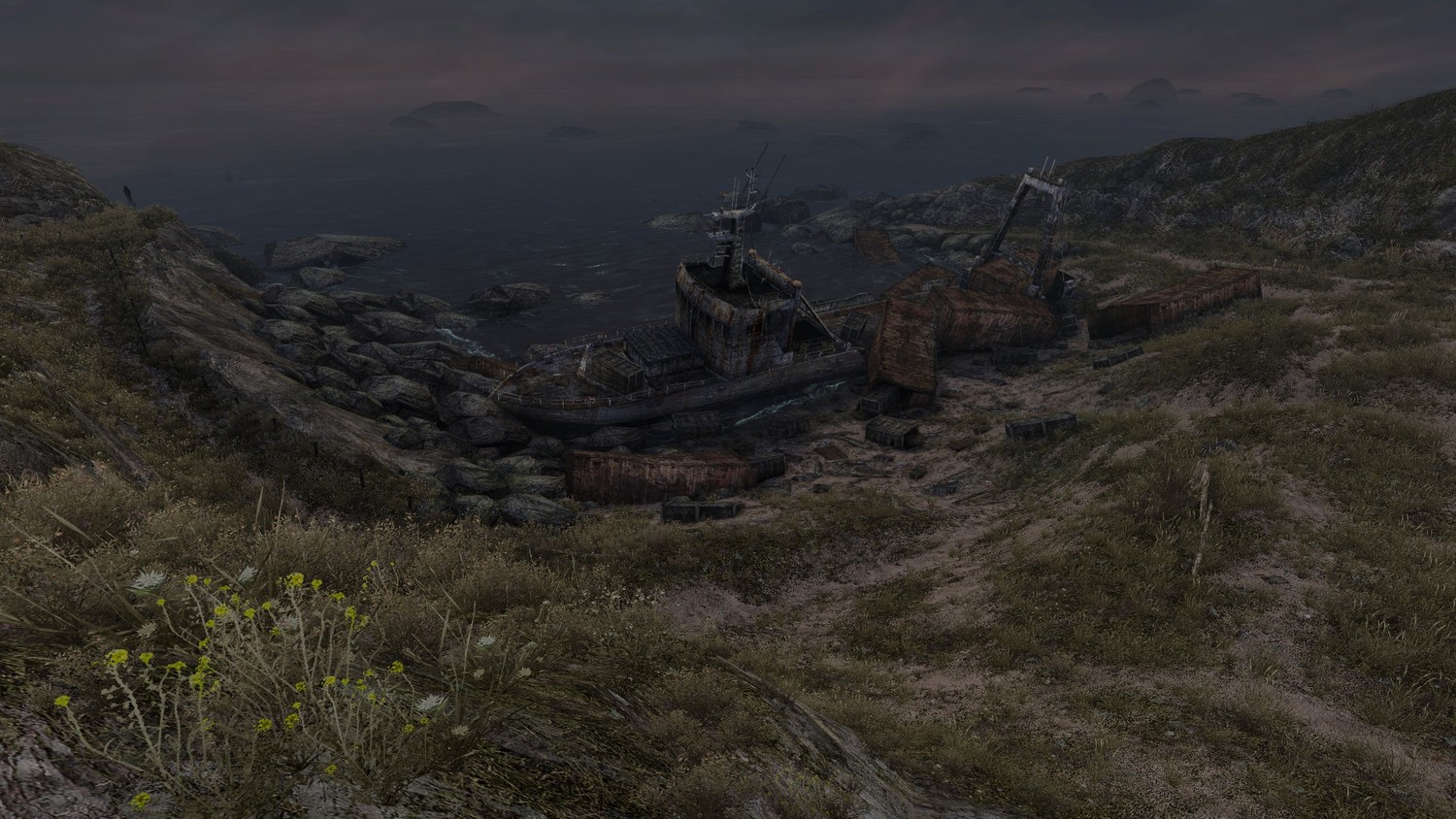
Review: Flinthook
Posted by Eric G on April 18th, 2017 | 0 Comments | Tags: Flinthook , Tribute Games
Flinthook comes from the Montreal indie studio Tribute. If the studio sounds familiar, it’s probably due to the fact that over the past few years, they’ve released some shining PSN titles, including Wizorb, Curses N’ Chaos, Ninja Senki DX, and Mercenary Kings. While Tribute is no stranger to crafting quality products, I feel they have reached new heights with Flint Hook.
Flinthook is a Rogue-like 2D platformer with a twist – you possess a hookshot that transports you just as much, if not more, than running and jumping. The grappling hook isn’t the only thing you possess; the initial cutscene shows your disembodied ghost hood taking control of a mortal being. This sets the stage for a narrative that is so whimsically video gamey that I can’t help but smirk when I say it out aloud: You play as a haunted pirate in space, tracking down ghost gems and feeding them to your goo-monster-compass in order to reveal the locations of renown dastardly miscreants and regain your soul(?). Thankfully, the gameplay snugly compliments the narrative.
After finishing the short tutorial and learning how to use your grappling hook (to fling around) and chronobelt (to slow down time for a short period), you’re automatically set on the tail of the first boss – Billy Bullseye. To discover his definite location, though, you’ll need to acquire three ghost gems. That means you’re going to have to play through three procedurally generated space ship mazes. You get to choose from a few different ships each time you go on a raid. There are short, initially cryptic messages that describe what’s in store, and the levels get harder in succession (obtaining the third ghost gem is harder than the second, which is harder than the first, for example). The messages lend a bit of meta-discovery to the game – what does “Battalion on Board” mean, exactly? Who is “Tiptonius Jones”, and what is his “Tip Saloon?” Oftentimes I chose a level just to figure out what the tags meant, stockpiling knowledge to make more informed choices in later runs. Again, this element fits nicely into the game’s overall arc. Once you’re aboard a ship, you move from screen to screen, revealing an overall map of the ship as you go. Some rooms turn into enemy arena battles, others offer shop items mid-run, and there are many more room types to find as you search for the giant treasure chest at the end of each ship.
At the outset, your character won’t be very powerful. As a matter of fact, you don’t unlock the ability to anchor yourself to the ground (hold L1) while shooting until after your first mission. (Two asides: 1. You can’t have a run-and-gun game of any sort without the anchoring/shooting ability; and 2. I was very glad the game didn’t force me to pay for this ability with gems, the in-game currency used to unlock other perks.) You will inevitably die during your first few missions. At this point, the game will tally up all of the experience points you’ve earned and display all the loot you’ve plundered. The screen looks very similar to the death scene in Rogue Legacy, which is fine; it’s nice to see all of the bonuses you’ve acquired throughout your run. You’ll level up a few times, unlock a few booster packs, and gain access to the Black Market. Before setting out on a new mission, the game forces you to mash open your booster packs (literally mashing the Square button) containing perks. You can also purchase perks from the Black Market using gems you’ve collected during your raids. These perks are the pathway to overall progression; passive buffs that modify your character and the game in various ways. Some buffs are simple – +10 Max HP; +10% EXP Earned, etc. – while others are a bit more impactful – Your blasma gun now has a spread shot of three bullets instead of one; You can carry an additional sub-weapon, etc. Initially, you’ll have three open slots to assign perks. The simpler perks only take up one slot each, but there are more powerful perks that take up to three or more. This turns into a sort of puzzle/inventory management mini-game where you’re maxamizing your gains based on your playstyle. You can purchase more perk slots in the Black Market, which is probably a good idea considering how much they increase your chances of survival.
Flinthook is difficult. I’ve played my fair share of Rogue-likes since they’ve come into fashion a few years back. Some of them I like (Rogue Legacy, Loot Rascals), some I’m luke-warm on (Spelunky), and some I flatout dislike (The Binding of Isaac). Difficulty is not what leads me to brand a game good or bad, necessarily. I’m more swayed by the game-feel, the fairness of the overall experience, and the character of the game. Flinthook scores high marks on all of these criteria. After a couple of raids, the controls become nearly secondhand. I haven’t been hit yet by a bullet I didn’t see coming. And the character of the game? Incredible. Tribute games always have top-notch animations and graphics. Flinthook is their best looking game. There are a multitude of character animations that I noticed only when paying close attention. For example, if you hold down while in mid-air, you fall faster and hit the ground harder. Flinthook’s (also the main character’s name) facial expressions change throughout this motion, conveying the impact and exuding a calm, cool, pirate demeanor. I know for a fact that the absence of these sorts of animations would make for a duller game. At first I thought the background color pallette – golds and browns – would paint a dull setting, but the ships are all teeming with life. The shopkeepers, the tip-givers, the map-revealers, etc. all have (often snarky) personalities of their own. I actually press Circle near them to read what they have to say as opposed to just buying some items and leaving. And the music? Do yourself a favor and listen to the soundtrack hosted on Patrice Bourgeault’s Bandcamp site. It is so, so good, and such a fitting bow with which to wrap the entire package.
The game is a Rogue-like, so there’s a lot of replayability in the fact that the levels are different each time you play the game. From what I can tell thumbing through the trophies, there are at least four bosses (I’m currently on the third and have played for many hours) to be thwarted. In addition to the main game, Infinite Raid allows you to play as long as you can stay alive. Each ship, your maximum HP drops a bit, a clever way of limiting players with mondo perks. I see myself coming back to Flinthook for a while to come. Like many other Tribute games, it is tightly designed; nothing feels extra, nothing feels stark. I love mashing packs open. I love unlocking relics. I absolutely hate getting hit in this game, and I love that about it. If you’re wondering whether you might like Flinthook or not, take this test: Do you like video games? (Y/N).
A copy of this game was provided by the publisher for review purposes. For more info on our review policy click here.
General Info
- Developer: Tribute Games
- Publisher: Tribute Games
- Release Date: April 2017
- Price: $14.99
- Genre: 2D Platformer, Grappling, Roguelike
- Players: 1
- Ratings: Everyone 10+, PEGI 7
Score:
What I Like:
- Tight gameplay
- Beautiful animations
- Mashing perk packs
- Excellent soundtrack
- Well-designed difficulty
What I Dislike:
- Flinthook looks a bit like a klansman, which is not very great




